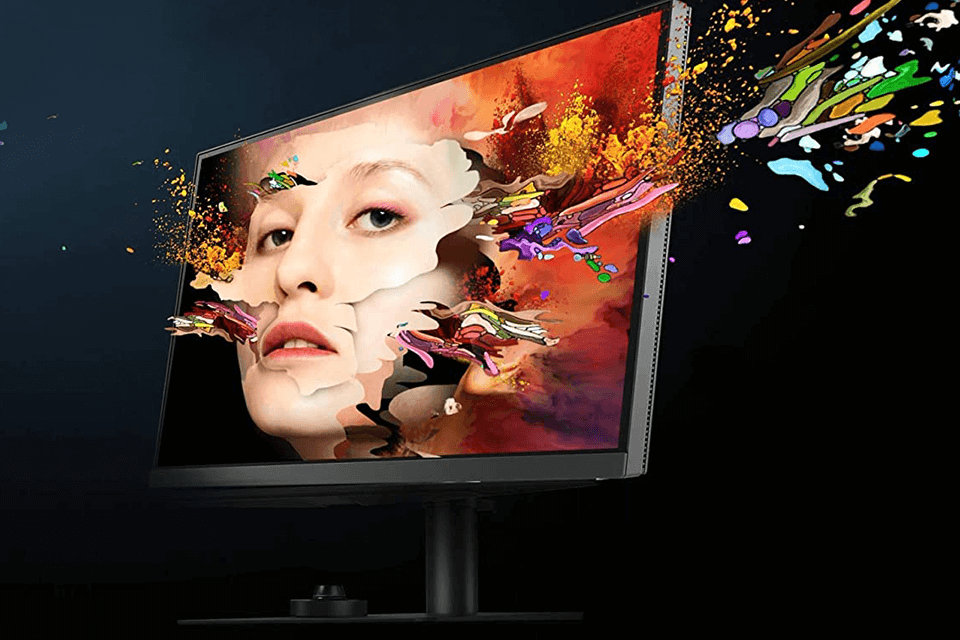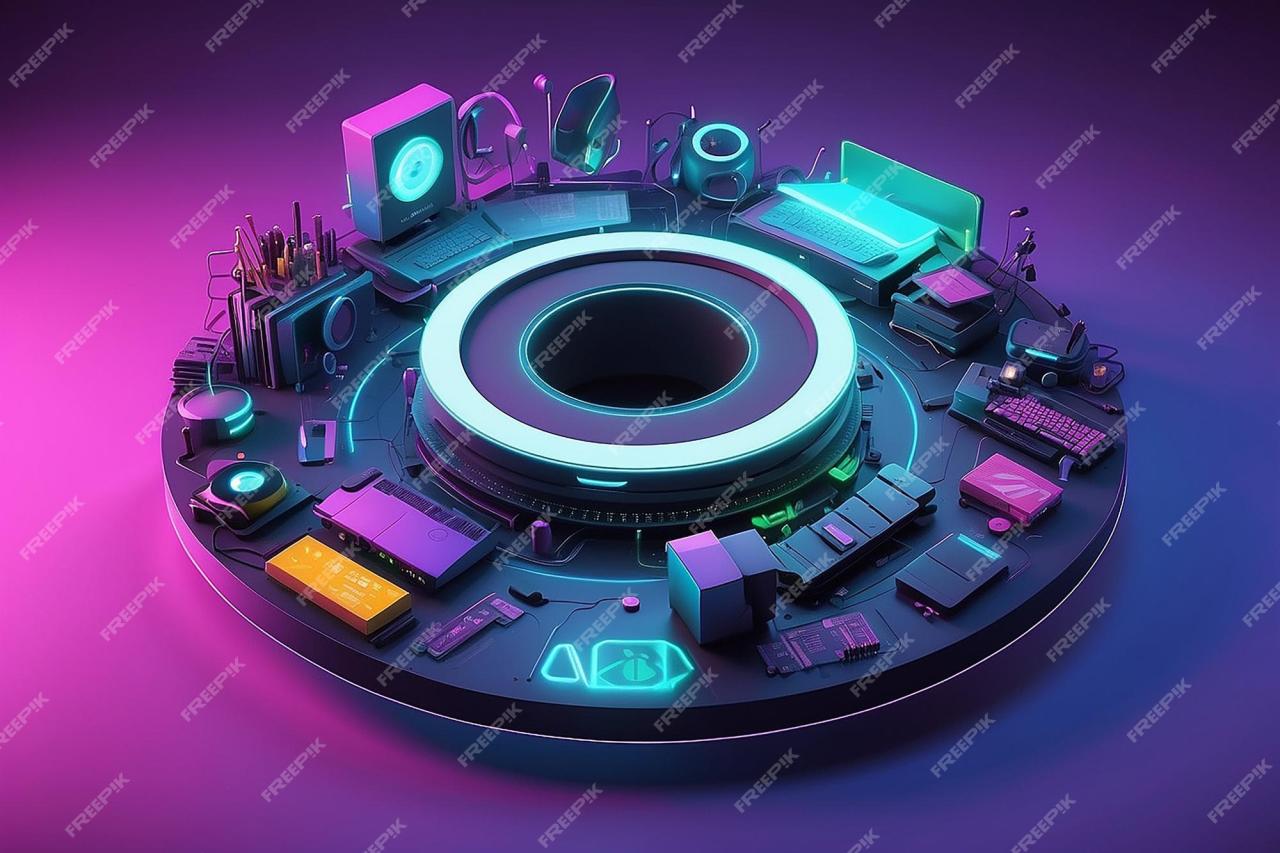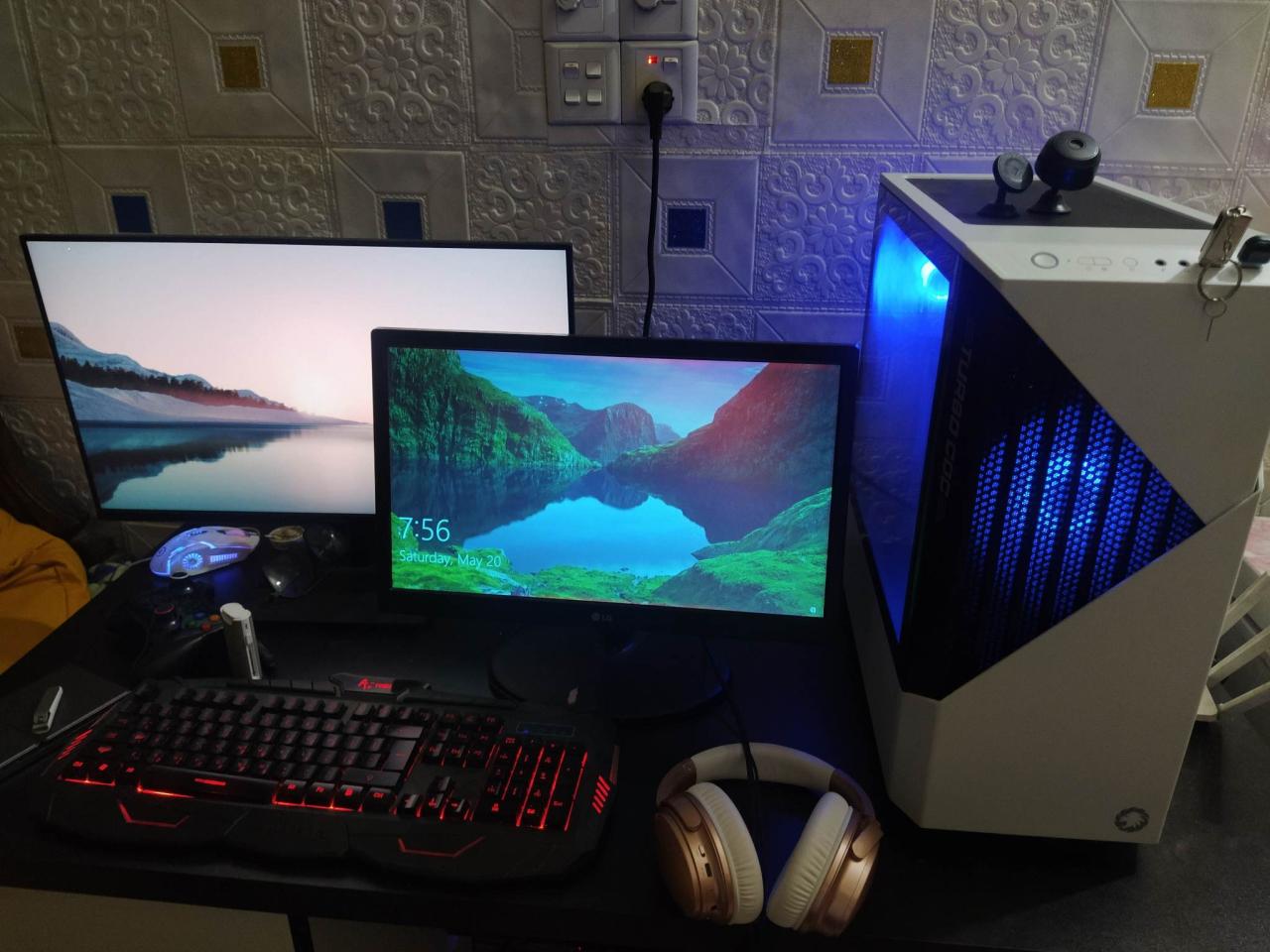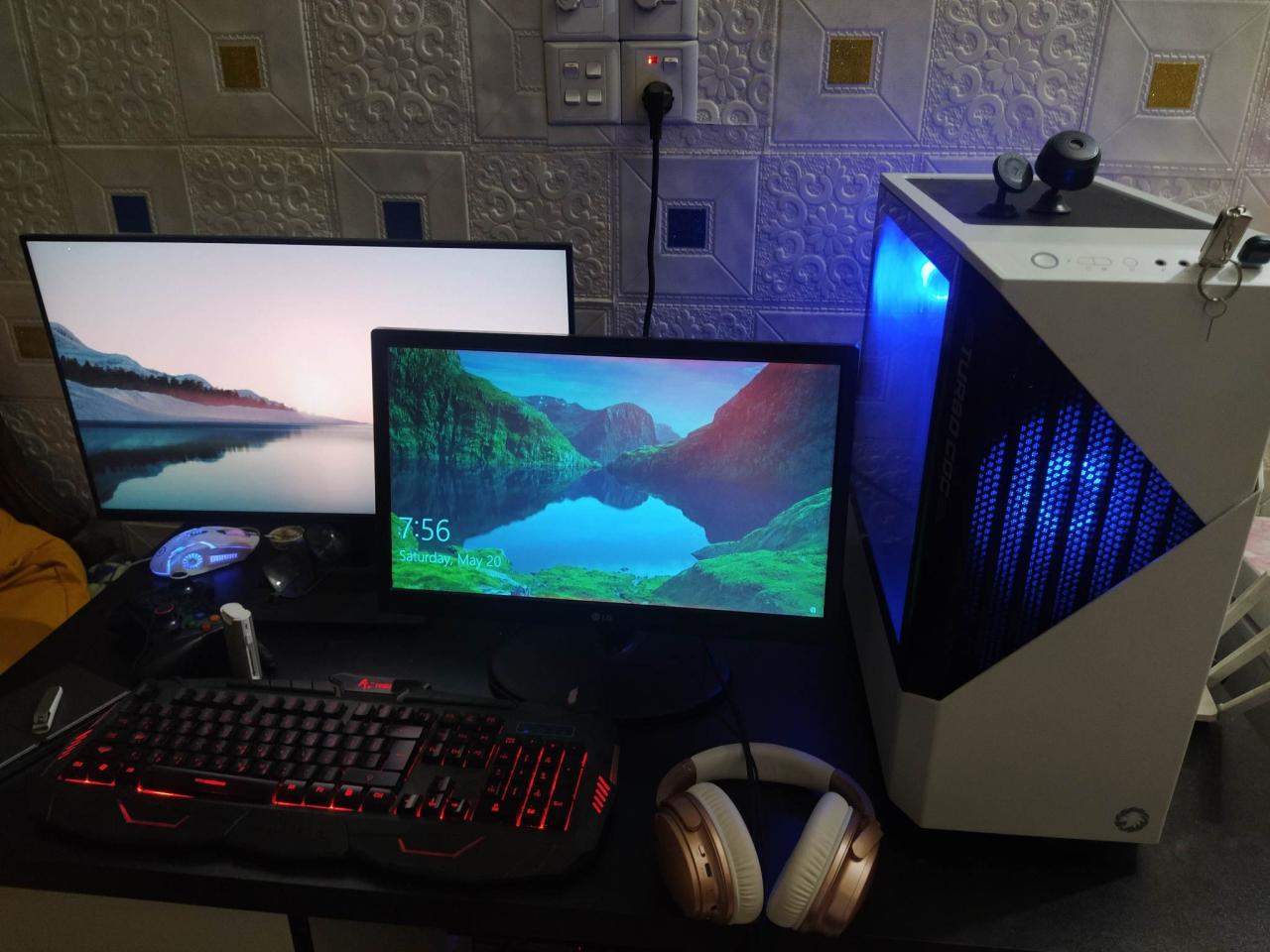RGB PCs have become a popular choice for PC builders, offering a vibrant and customizable aesthetic. Beyond the visual appeal, understanding RGB components, customization options, and potential performance implications is crucial for a successful build. This guide delves into the intricacies of RGB PC builds, from component selection to troubleshooting.
This exploration encompasses various aspects, including the diverse range of RGB components available, the software tools used for control, the effect on performance, and the evolving trends in aesthetic choices. We also address potential issues and provide solutions to common problems.
RGB PC Components
RGB lighting has become a popular feature in modern PC builds, enhancing aesthetics and adding a personalized touch. This customization extends beyond simple visual appeal, offering a means to synchronize lighting across various components and to tailor the system’s ambiance to the user’s preferences.The integration of RGB technology into PC hardware has driven innovation in design and functionality, allowing for dynamic and synchronized lighting effects.
This has created a thriving market for specialized components and accessories, alongside a strong community of enthusiasts who enjoy experimenting with and sharing their setups.
Common RGB Components
Various components in a PC can incorporate RGB lighting. A comprehensive list includes:
- Motherboards: Many modern motherboards feature RGB headers, allowing users to control and synchronize the lighting of compatible components like fans and peripherals.
- Cases: PC cases are often equipped with RGB lighting strips or panels, providing a visually striking exterior and potentially synchronizing with other components.
- Fans: RGB fans are readily available and can add dynamic illumination to the interior of a PC. These fans often synchronize with other RGB components.
- Peripherals: Keyboards, mice, and other peripherals frequently incorporate RGB lighting, offering customisable lighting effects and potentially coordinating with the rest of the PC build.
- Graphics Cards: Some high-end graphics cards also feature RGB lighting options, further enhancing the overall visual appeal.
RGB Lighting Technologies
Different technologies underpin the RGB lighting found in PC components.
- LED (Light Emitting Diodes): LEDs are the prevalent technology for RGB lighting in PC components. They are known for their efficiency, longevity, and vibrant colour output. Their small size allows for intricate lighting patterns.
- Aura Sync (and other proprietary solutions): Some manufacturers, like ASUS and others, offer proprietary RGB synchronization technologies. These systems allow for more complex and nuanced lighting effects, but compatibility is limited to components from the same brand.
Connection Methods
RGB components are connected through various methods.
- Cables: Many RGB components utilize standard 3-pin or 4-pin connectors, similar to those used for other PC components. These cables facilitate the transmission of power and data signals for the RGB lighting. The types of cables may differ depending on the specific manufacturer and component.
- Connectors: Motherboards often have specific RGB headers designed for connecting compatible components. The design and functionality of these headers can vary across different motherboard models. It is important to consult the motherboard manual to ensure proper connectivity.
RGB Implementation in PC Builds
RGB lighting can be implemented in diverse ways to achieve various effects.
- Static Lighting: Some users prefer static lighting, choosing a single colour or pattern that remains consistent.
- Dynamic Lighting: More complex setups can incorporate dynamic effects, cycling through colours, pulsing, or reacting to specific events. This can be achieved through software control.
- Synchronization: Many components can synchronize their lighting, creating a cohesive and visually appealing effect across the entire system. Users can coordinate the colours and patterns of fans, cases, and other peripherals for a unified aesthetic.
RGB Component Brand Comparison
The table below provides a comparative overview of RGB component brands. Factors such as build quality, lighting capabilities, and software support are considered.
| Brand | Pros | Cons |
|---|---|---|
| Corsair | Wide range of components, reliable build quality, robust software support | Can be slightly more expensive than competitors |
| ASUS | Excellent Aura Sync synchronization, high-quality lighting, and often compatible with other ASUS components | Limited compatibility outside the Aura Sync ecosystem |
| Noctua | High-quality fans and other components, often known for quiet operation, good lighting control | May not have the same level of extensive RGB customization as other brands |
| NZXT | Well-designed cases and lighting solutions, strong community support | Can vary in component quality depending on the specific product |
RGB PC Customization
Personalizing your PC’s RGB lighting offers a significant degree of visual customization and can enhance the aesthetic appeal of your build. This involves controlling and tailoring the lighting effects on various components, such as fans, RAM, and the motherboard. Proper understanding of the available customization options is key to achieving a desired visual outcome.
Methods for Controlling and Customizing RGB Lighting
Different methods allow for control and customization of RGB lighting. Hardware-based controllers, often integrated within the motherboard, provide basic control over the lighting effects. Software solutions offer a broader spectrum of customization options, encompassing advanced effects, profiles, and synchronization.
Software Solutions for Controlling RGB Lighting Effects
Numerous software solutions are designed for controlling RGB lighting in PCs. These programs typically offer user-friendly interfaces to adjust lighting effects, allowing users to modify colors, speeds, and patterns. Software solutions often support synchronization across multiple RGB components, enabling a cohesive lighting experience. Popular software packages, such as the manufacturer’s dedicated utilities, are commonly used to achieve this.
Creating and Applying Custom RGB Profiles
Creating and applying custom RGB profiles is a straightforward process. Users typically select components, define color schemes, and set lighting effects. Software tools often allow for saving and recalling custom profiles, ensuring that desired lighting configurations can be easily applied and reapplied.
Examples of Different RGB Lighting Effects
Diverse lighting effects are available. Static colors provide a simple and consistent illumination, while dynamic effects, such as breathing, cycling, or wave patterns, create more visually engaging displays. Some software allows users to incorporate animations, making lighting effects even more dynamic and tailored to the user’s preferences.
RGB Fan Customization Options
Customizing RGB fans offers a range of options to enhance visual appeal. A comprehensive table demonstrates the key customization features:
| Customization Option | Description |
|---|---|
| Color Selection | Users can choose from a wide array of colors, including single colors, color gradients, and even custom color palettes. |
| Speed Control | Allows for adjustment of the speed at which the RGB lighting cycles through colors or patterns. |
| Lighting Effects | Users can select various lighting effects, such as static, breathing, or wave patterns. |
| Synchronization | Enables coordinated lighting across multiple fans and other RGB components. |
| Presets | Many software solutions provide pre-defined lighting profiles to accelerate customization. |
RGB PC Performance

RGB lighting, while aesthetically pleasing, doesn’t directly impact a PC’s processing power or overall performance. The visual enhancements are purely cosmetic and do not contribute to faster calculations or improved data transfer rates. The performance of a PC hinges on factors such as the CPU, GPU, RAM, and storage, not the presence or absence of RGB lighting.The primary focus of RGB PC builds is on aesthetics and personalization, not performance gains.
While RGB lighting can enhance the user experience, its effect on actual performance metrics is negligible. The impact is purely subjective and tied to the user’s perception of the system.
Impact of RGB Lighting on PC Performance
RGB lighting, in its various forms, has a negligible impact on PC performance. Modern PC components are designed to be efficient and their performance is not affected by RGB lighting systems. The light emitted from RGB components is generated by LEDs, and the energy consumed by these LEDs is minimal in comparison to the power consumed by other critical components.
Comparison of RGB and Non-RGB PC Builds
The presence or absence of RGB lighting in a PC build has no impact on the overall performance metrics. A system with RGB components will perform identically to one without, provided the hardware components are identical. The only difference lies in the aesthetic appeal and personalization options offered by RGB lighting.
Energy Consumption of Different RGB Configurations
The energy consumption associated with RGB lighting is generally minimal and insignificant in comparison to the power demands of the CPU, GPU, and other core components. Variations in RGB configurations will lead to minor differences in energy consumption, but the impact on the overall power bill is typically negligible. For example, a system with more intensely lit RGB components might consume slightly more power than a system with fewer or dimmer lighting configurations, but the differences are generally insignificant.
Potential Interference with Other Components
There’s a negligible risk of RGB lighting interfering with other PC components. RGB lighting systems are designed to operate independently of other hardware components. Interference is highly improbable due to the precise design and separate circuits used in these systems.
Cooling Challenges with RGB Components
RGB components, particularly those with high-intensity or complex lighting configurations, might slightly increase the internal temperature of the PC case. The heat generated by RGB LEDs is minimal. However, this minimal increase in temperature is generally not significant enough to pose a substantial cooling challenge. Carefully planned airflow within the PC case is more crucial in maintaining optimal temperatures.
Well-designed PC cases, with proper ventilation, mitigate any potential cooling issues.
RGB PC Aesthetics and Trends

RGB PC builds are increasingly becoming a statement of personal style, extending beyond mere functionality. The vibrant hues and customizable patterns of RGB lighting allow for a unique and personalized aesthetic, transforming a PC from a functional machine to a captivating piece of design. This section delves into the evolving aesthetics, exploring examples of stunning builds, contrasting lighting styles, and current trends in customization.
Aesthetically Pleasing RGB PC Builds
Various PC builds showcase impressive RGB aesthetics, ranging from minimalist, subtle glows to extravagant, multi-colored displays. The choice of components and their integration play a critical role in achieving a visually appealing result. A well-executed build often blends the hardware’s form factor with the chosen RGB palette, creating a cohesive and harmonious design.
Comparison of RGB Lighting Styles
RGB lighting styles encompass a broad spectrum, from static colors to dynamic patterns. Static lighting, employing a single color or a few selected colors, offers a simple yet impactful aesthetic, ideal for those seeking a subtle but elegant look. Dynamic lighting, on the other hand, utilizes software to cycle through various colors and patterns, often synchronized with music or other stimuli, offering a more vibrant and interactive experience.
Color gradients and animations are also common, offering a spectrum of visual options.
Current Trends in RGB PC Customization
Current trends in RGB PC customization prioritize personalization and integration. Users are increasingly focused on creating unique and distinctive builds, reflecting their individual tastes. This is often achieved through precise control over lighting profiles, enabling users to synchronize lighting effects across multiple components and achieve complex visual patterns. Furthermore, the trend of utilizing software to control and customize RGB lighting effects is becoming more pronounced, offering extensive control over colors, animations, and synchronization with other devices.
Effect of RGB Lighting on Overall PC Aesthetics
RGB lighting significantly impacts the overall look and feel of a PC. A carefully chosen color scheme can elevate the aesthetic appeal of a build, making it a statement piece in a home or workspace. The combination of RGB lighting with the hardware’s form factor and design can create a harmonious blend, enhancing the visual appeal of the entire setup.
The visual impact can be further amplified through the choice of case design and color, which complements the RGB lighting effectively.
RGB PC Color Schemes
| Color Scheme | Description | Example Build Components |
|---|---|---|
| Monochromatic | A single color scheme, often with variations in intensity or saturation. | Black PC case with deep blue lighting on the motherboard and fans, or a white PC case with soft purple lighting |
| Dual-Tone | Two complementary colors used in a contrasting or harmonious manner. | A red and black PC case with a blue motherboard and fans, or a gray and white PC case with green and teal lighting. |
| Gradient | A smooth transition between different colors, often used for dynamic effects. | A rainbow effect on the case, transitioning through various colors, or a gradient from blue to purple on the motherboard lighting. |
| Custom Patterns | User-defined patterns or animations, often achieved through software control. | Custom patterns that mimic circuit boards, waves, or geometric designs on the motherboard, case, and fans. |
Troubleshooting RGB PC Issues

Troubleshooting RGB PC issues can be a frustrating but manageable process. Proper diagnosis and methodical troubleshooting are key to identifying and resolving problems quickly. Common causes of RGB malfunctions range from simple connectivity errors to more complex hardware failures. Understanding the potential causes and the appropriate troubleshooting steps can significantly reduce the time and effort required to get your RGB system back online.
Common RGB PC Problems and Their Potential Causes
A variety of issues can plague RGB PC systems. These problems can stem from faulty components, incorrect configurations, or inadequate power delivery. Common problems include:
- No RGB lighting at all. This can be due to a lack of power to the components, incorrect wiring, or a faulty controller. A poorly seated component, such as a graphics card, can also impede power delivery to the RGB circuits.
- Partial or inconsistent RGB lighting. This often indicates a problem with the RGB controller, a cable issue, or a component that’s not receiving enough power or experiencing intermittent power surges.
- Flickering or strobing RGB lighting. This suggests issues with the power supply, incorrect cabling, or a defective RGB component. The system might be struggling to maintain a stable voltage for the RGB circuits.
- Colors not displaying as expected. This is a frequent issue. It’s often related to driver problems or improper configuration in the RGB software or firmware of the affected components.
- Unexpected RGB lighting patterns or animations. This could stem from incorrect configuration within the software or improper firmware on the components.
Diagnosing RGB Component Malfunctions
Properly diagnosing RGB component malfunctions involves systematically checking the components for visible damage, ensuring the correct connections, and verifying the stability of the power supply.
- Visual Inspection: Inspect the RGB components for any visible damage, such as bent pins, broken cables, or signs of overheating.
- Connectivity Verification: Carefully check all RGB cables for proper connections to ensure that all cables are firmly plugged in. Look for loose or damaged connectors.
- Power Supply Stability: Confirm the power supply is providing adequate power to all components. A power supply unit (PSU) that’s underpowered or experiencing issues could lead to inconsistent RGB lighting.
Troubleshooting RGB Lighting Issues in Various Components
Troubleshooting RGB lighting issues involves a methodical approach to isolate the source of the problem.
- Motherboard: Check the motherboard’s RGB header connections and ensure the proper cable is connected to the header. Verify the correct configuration in the motherboard’s BIOS or software settings.
- Graphics Card: Verify that the graphics card’s RGB connector is correctly connected to the motherboard’s header and the correct software drivers are installed. Inspect the graphics card’s RGB components for physical damage.
- Fans and other Components: Examine the connections for each RGB fan or component. Ensure the proper cables are connected to the respective headers on the motherboard or other components.
Troubleshooting RGB Motherboard Issues
Diagnosing motherboard RGB issues involves checking the motherboard’s RGB headers, verifying the software configuration, and ensuring sufficient power delivery.
- Verify Header Connections: Check all the RGB headers on the motherboard for correct and secure connections. Ensure the RGB cables are firmly connected to the headers.
- Software Configuration: Review the RGB software settings and configuration for the motherboard. Incorrect settings can cause various RGB issues. Ensure the software is updated to the latest version.
- Power Supply Verification: Confirm the power supply is providing adequate power to the motherboard. An unstable power supply can cause intermittent RGB problems.
Resolving Connectivity Problems Between RGB Components
Connectivity issues between RGB components can arise from incorrect cable connections, faulty connectors, or inadequate power delivery.
- Cable Integrity: Inspect the RGB cables for any damage, such as cuts, bends, or exposed wires. Replace any damaged cables.
- Connector Functionality: Ensure all connectors are firmly seated in their respective components. Check for any loose or misaligned connectors. A poorly seated component can interrupt power and cause RGB issues.
- Power Delivery Evaluation: Evaluate the power delivery to the RGB components. Insufficient power can lead to unstable or non-functional RGB lighting. Ensure the PSU can adequately power the RGB components and the system.
RGB PC Build Considerations
Planning an RGB PC build requires careful consideration of various factors beyond simply choosing visually appealing components. A well-executed build balances aesthetics with performance and functionality, ensuring the RGB lighting enhances the system rather than detracting from its overall capabilities. This involves understanding how different components interact with each other, and anticipating potential issues before they arise.A successful RGB build relies on careful planning and understanding of component compatibility.
The key is to select components that not only match in terms of aesthetics but also function seamlessly together, optimizing both visual appeal and performance.
Component Selection Criteria
A critical aspect of building an RGB PC is selecting components that harmonize in terms of lighting style and color scheme. This involves understanding the different types of RGB lighting available and how they can be coordinated to create a cohesive look. The choice of lighting effects, like static, dynamic, or synchronized patterns, will greatly influence the overall visual experience.
- Color Matching: Ensure the chosen RGB components have color palettes that complement each other, and consider how these colors interact in different lighting conditions. For example, a deep blue motherboard might not complement a bright green case, leading to an unbalanced look.
- Lighting Effects: Some components offer more dynamic lighting effects than others. It’s important to select components with lighting effects that work well together and avoid clashing or overwhelming lighting scenarios. For example, a case with sophisticated dynamic lighting effects might not need the same level of complexity from a graphics card.
- Synchronization Capabilities: Look for components that support synchronization with software like ASUS Aura Sync or Gigabyte Fusion. This ensures coordinated lighting effects across multiple components.
RGB Build Strategies
Different RGB PC build strategies cater to varying preferences. Understanding these approaches helps in selecting a build that aligns with your desired aesthetic and functionality.
- The Unified Theme: This strategy focuses on a cohesive color scheme across all components, using similar or complementary colors to create a visually unified and harmonious look. This approach provides a more streamlined and polished aesthetic, but might require careful selection to ensure a balanced color palette.
- The Accented Theme: This strategy employs a dominant color scheme but uses accents of different colors on specific components to add visual interest. This approach allows for a more personalized build with varying degrees of visual complexity.
Component Compatibility
Matching RGB components for seamless lighting interaction is crucial. A well-coordinated build avoids jarring or distracting lighting effects, allowing the RGB lighting to complement the overall system.
- Software Compatibility: Choose components that support the same or compatible RGB software for seamless synchronization and control. This avoids complications with different software interfaces and ensures a unified lighting experience.
- Synchronization Protocols: Ensure components support the same synchronization protocols (e.g., addressable RGB) to guarantee smooth interactions and avoid compatibility issues. This ensures that your lighting scheme works seamlessly across the different components, and avoid potential flicker or erratic behavior.
Potential Pitfalls
Avoiding common pitfalls is key to a successful RGB PC build. Knowing these potential issues beforehand can help you make informed decisions and prevent unnecessary frustration.
- Inconsistent Lighting: Mismatched RGB lighting effects can result in a visually unappealing build. Different components with varying lighting patterns can create a jarring effect.
- Software Issues: Some RGB software can be problematic, leading to issues with component synchronization, lighting controls, or even system instability. Thorough research into the specific software used by your components is crucial.
- Over-Saturation: Using too many vibrant or contrasting colors can overwhelm the system and detract from its functionality. Striking a balance between aesthetics and visual harmony is essential.
Epilogue
In conclusion, building an RGB PC requires careful consideration of components, customization, and potential performance trade-offs. Understanding the diverse options, the software tools, and the potential issues are essential for a successful and satisfying build. This comprehensive guide provides a strong foundation for anyone looking to embark on this exciting endeavor.
FAQ Insights
What are the most common RGB PC problems and their causes?
Common issues include faulty components, incorrect cable connections, software conflicts, and incompatibility between different RGB components. Troubleshooting often involves checking connections, verifying software settings, and ensuring component compatibility.
How does RGB lighting affect PC performance?
Generally, RGB lighting has minimal impact on PC performance, but certain configurations might increase power consumption. This is usually negligible, but it’s important to be aware of potential influences.
What are some important factors to consider when selecting RGB components?
Compatibility, desired aesthetics, budget, and desired performance levels should be carefully weighed when selecting components. Choosing components that work well together in terms of RGB synchronization and functionality is crucial.
What are the current trends in RGB PC customization?
Current trends often favor minimalist designs, intricate lighting patterns, and synchronization between components. The use of specific color palettes and the incorporation of unique lighting effects are also prominent.






